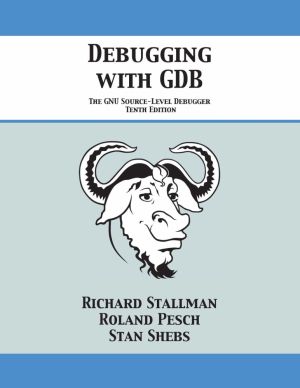- Регистрация
- 27 Авг 2018
- Сообщения
- 37,730
- Реакции
- 541,111
- Тема Автор Вы автор данного материала? |
- #1

The GNU Debugger allows you to see what is going on "inside" a program while it executes - or what a program was doing at the moment it crashed. GDB supports C, C++, Java, Fortran and Assembly among other languages; it is also designed to work closely with the GNU Compiler Collection (GCC). The GNU Debugger Program has four special features that helps you catch bugs in the act: It starts your program for you, specifying anything that might affect it's behavior. Makes your program stop under specified conditions. Examines what happened when the program stopped. Allows you to experiment with changes to see what effect they have on the program. This book will show you: setting and clearing breakpoints examining the stack, source files and data examining the symbol table altering program execution specifying a target for debugging how to control the debugger how to use canned command sequences how to install GDB and much more! This manual is written for programmers. It is designed so someone can begin utilizing GDB after just reading the first chapter, or read the whole manual and master the program. Synopsis of ideas and extensive examples are given.
The purpose of a debugger such as gdb is to allow you to see what is going on "inside" another program while it executes - or what another program was doing at the moment it crashed. gdb can do four main kinds of things (plus other things in support of these) to help you catch bugs in the act:
- Start your program, specifying anything that might affect its behavior;
- Make your program stop on specified conditions;
- Examine what has happened, when your program has stopped;
- Change things in your program, so you can experiment with correcting the effects of one bug and go on to learn about another.



